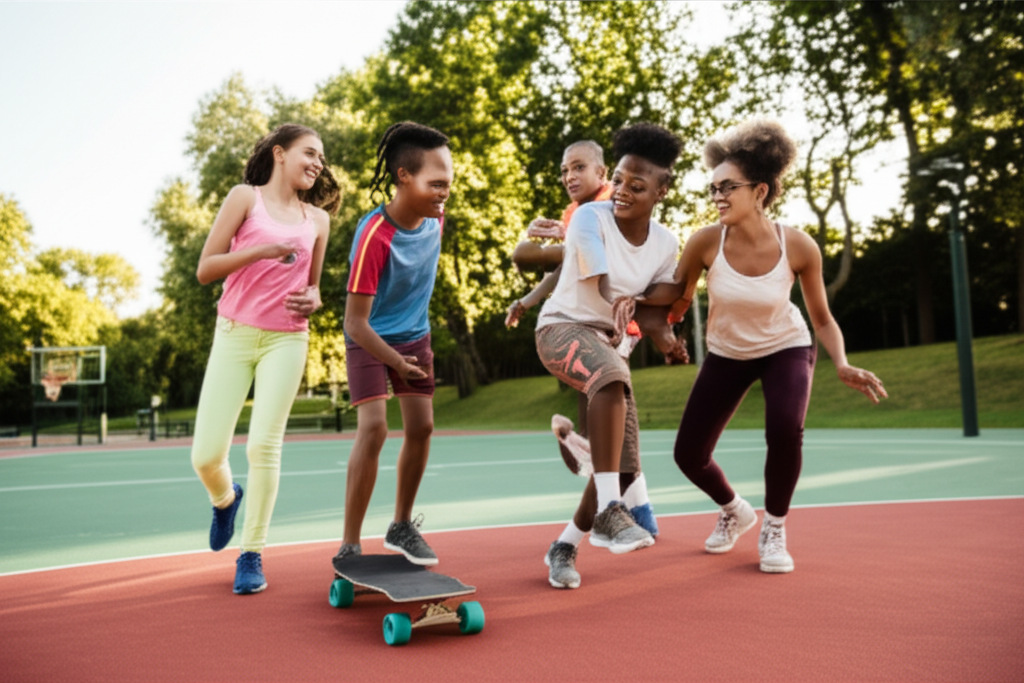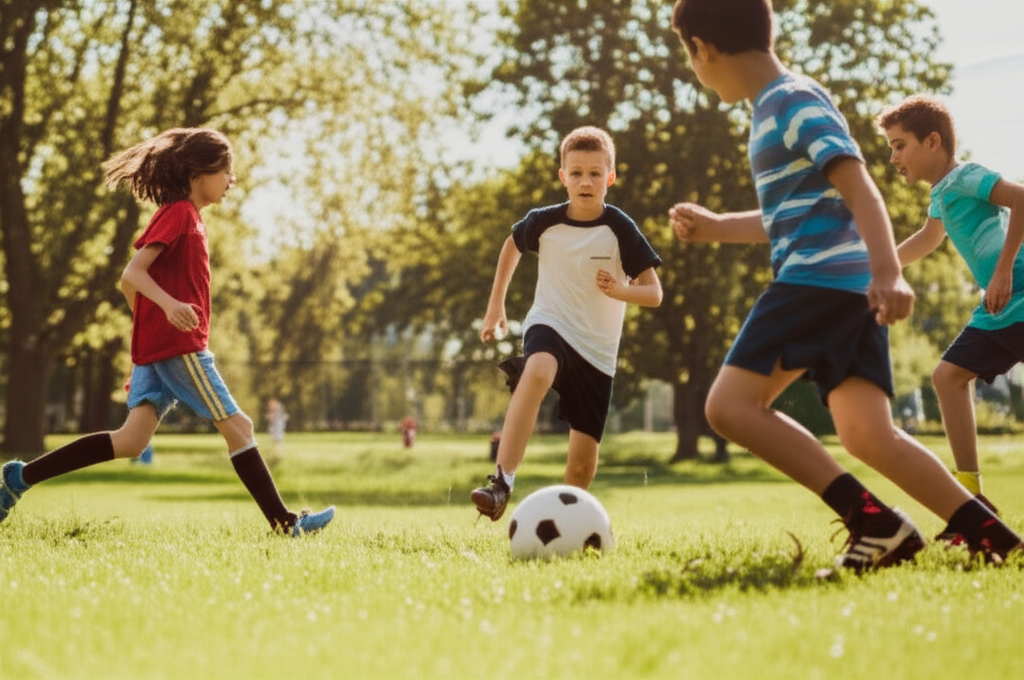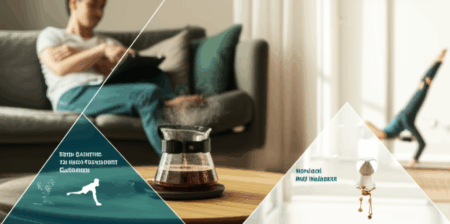The teenage years are a period of profound transformation, not just socially and emotionally, but also neurologically. As adolescents navigate the complexities of identity formation and academic pressures, their brains are undergoing critical development. Emerging research strongly suggests that lifestyle factors, particularly physical fitness and screen time habits, play a pivotal role in shaping adolescent brain health, mental well-being, and learning capabilities. Understanding these connections is crucial for fostering environments that support optimal development in young people.

The Study’s Groundbreaking Findings on Adolescent Brains
Recent studies from institutions like the University of Eastern Finland and Kuopio University Hospital, as part of their Physical Activity and Nutrition in Children (PANIC) and FitBrain studies, have shed light on the intricate relationships between physical activity, screen time, and brain mechanisms underlying mental health and learning. Researchers have consistently found that physical fitness and active lifestyles are associated with healthier brain development in teenagers, while excessive or passive screen time can have detrimental effects.
One study, involving 45 healthy Finnish adolescents aged 16-19, highlighted that better physical fitness was linked to increased excitability and stronger inhibition of the motor cortex. These cortical processes are vital regulators of brain development and learning. Conversely, passive engagement with digital devices, such as endless scrolling or watching videos, was found to weaken cortical inhibition – essentially the brain’s “braking system”. Active digital engagement, much like organized sports, was associated with increased cortical excitability.
Another eight-year longitudinal study from the University of Jyväskylä in Finland, tracking 241 children into adolescence, revealed that higher physical fitness in childhood translated to better cognitive test scores, lower stress, and reduced depressive symptoms in their teenage years. These findings underscore that the benefits of physical activity are not just immediate but can accumulate over time, influencing long-term brain health and mental resilience.
Unpacking the Link Between Physical Activity and Brain Health
Physical activity is a powerful catalyst for brain health. When the body works hard during exercise, the heart pumps more oxygen and nutrients to the brain, feeding billions of neurons. This enhanced nourishment leads to the creation of new neurons and strengthens connections between existing ones, particularly in critical areas like the hippocampus (memory) and prefrontal cortex (attention).
Studies demonstrate that active and physically fit children often possess healthier brains, characterized by larger gray matter, thicker cerebral cortices, stronger white matter connections, and improved blood flow. These structural and functional changes are directly associated with better cognitive outcomes. The World Health Organization (WHO) emphasizes that physical activity promotes bone health, encourages healthy growth and development of muscle, and improves motor and cognitive development in children and adolescents. Regular exercise can also enhance brain plasticity, a key factor in learning and adaptation.
The Impact of Screen Time on Adolescent Brains
While digital devices offer numerous benefits, the quantity and quality of screen time significantly influence brain development. Excessive screen time, particularly passive consumption like prolonged TV viewing or social media scrolling, has been linked to several negative outcomes for adolescent brains and behavior.
Research indicates that high screen time can lead to measurable structural changes in the brain, including a thinner cortex in heavy device users compared to those with less exposure. The cortex is responsible for processing information, language, attention, memory, and perception, meaning thinning in this region during crucial developmental windows can have long-term implications. Passive screen engagement has been specifically shown to weaken cortical inhibition, impacting the brain’s ability to regulate processes.
Furthermore, excessive screen use, especially involving social media, has been associated with attention deficits, increased aggression, low self-esteem, depression, and anxiety in children and adolescents. The American Psychological Association highlights a vicious cycle where increased screen time can lead to emotional and behavioral problems, and children facing these problems may then turn to screens to cope.

Mental Health Implications for Teenagers
Adolescence is a vulnerable period for mental health, with many conditions like anxiety and depression often emerging during these years. Lifestyle choices, particularly physical activity and screen time, can act as both risk and protective factors.
Reducing Risk Factors: Exercise as a Buffer
Regular physical activity is a well-established intervention for improving mental health. For teenagers, being physically active, especially in ways that improve fitness, contributes to a healthier brain that is more resilient to stress. Exercise helps release endorphins and can alleviate symptoms of depression and anxiety, providing a sense of accomplishment and confidence. Studies have found that children with better physical fitness report less stress and depression as teenagers, possibly due to increased self-esteem and mental resilience.
Moreover, organized sports not only support social well-being but also promote adolescents’ brain health. Even one day per week of recommended physical activity was associated with better mental health compared to no activity. This suggests that even small, consistent efforts can make a significant difference.
Navigating the Digital World: Screen Time Management
Problematic screen use, particularly social media, has been linked to lower mental and social well-being, increased stress, and depressive symptoms in adolescents. The constant connection, fear of missing out, and exposure to curated realities can lead to feelings of isolation and inadequacy. One study found that teens who spent more time on screens thought about suicide significantly more than those who did not, with the risk increasing for those using electronic devices for two or least two hours daily.
The quality of screen time also matters. Passive engagement, such as endless scrolling or watching videos, has been shown to weaken cortical inhibition. In contrast, active engagement, like interactive learning apps or creative digital projects, can be associated with increased cortical excitability, similar to the effects of physical activity. Limiting passive screen time and encouraging active, stimulating digital use is a key strategy for protecting adolescent mental health.

Enhancing Cognitive Function and Learning
Beyond mental health, the interplay of fitness and screen time directly impacts a teenager’s ability to learn, focus, and perform academically.
Improved Focus and Academic Performance
Physical activity significantly boosts cognitive performance. Aerobic exercise, for instance, leads to substantial functional changes in the brain, improving reasoning skills, focus, attention, and problem-solving abilities – all critical for classroom success. Exercise strengthens connections in brain regions responsible for memory and attention, such as the hippocampus and prefrontal cortex.
Encouraging participation in sports and activities that require complex thinking, like juggling or playing a musical instrument, can further enhance working memory and inhibitory control, allowing teens to focus and avoid distractions. More active children have been shown to exhibit less aggressive behavior and problems with impulse control, while older, active children experience fewer behavioral issues and symptoms of depression and anxiety.
The Pitfalls of Excessive Screen Use on Cognition
Excessive screen time can undermine cognitive development and academic achievement. Research shows a negative association between screen time and the development of physical and cognitive abilities. Too much time in front of screens, especially when multitasking with other media, has been linked to poorer executive functioning and academic performance. Early screen exposure has also been associated with lower cognitive abilities and academic performance in later years.
The impact is not just on current performance; it can set a trajectory for future challenges. For example, increased television exposure at age two corresponded to a decrease in classroom participation and math proficiency by fourth grade. Beyond academic struggles, excessive screen usage is associated with sleep problems, which in turn affect attention, memory, and overall brain function. Problematic social media use has been linked to less sleep and later bedtimes, impacting overall health and academic performance.

Practical Advice for Parents and Educators
Given the profound impact of fitness and screen time, parents, educators, and policymakers have a critical role in promoting healthy habits for adolescents.
Fostering a Culture of Movement
- Prioritize Physical Activity: The World Health Organization recommends 60 minutes or more of physical activity per day for adolescents. This should be a daily priority, both at school and during leisure time.
- Encourage Organized Sports and Active Hobbies: Participation in sports clubs and other structured physical activities not only promotes physical fitness but also contributes to brain health and social well-being.
- Lead by Example: Parents and guardians who prioritize physical activity are more likely to instill similar values in their children.
- Integrate Movement into Daily Life: Encourage walking, cycling, or active play as part of daily routines. Even small increases in activity can make a difference.
Setting Healthy Screen Time Boundaries
- Limit Passive Screen Time: Experts advocate for limiting recreational screen time to two hours or less per day. Critically, parents should be cautious about what screens they allow and utilize parental controls to manage usage.
- Promote Active Digital Engagement: Encourage screen time that is interactive, educational, or creative, rather than solely passive consumption.
- Establish Screen-Free Zones and Times: Designate certain times (e.g., mealtimes, an hour before bed) and places (e.g., bedrooms) as screen-free to promote in-person interactions, better sleep, and other healthy activities.
- Discuss Content and Quality: Parents should have a pulse on the kinds of screen time their children are engaging in, ensuring content is age-appropriate and beneficial. Digital literacy education is vital to help adolescents navigate the online world responsibly.
- Be Mindful of the “Vicious Circle”: Recognize that children experiencing emotional problems may turn to screens to cope, highlighting the need for proactive mental health support alongside screen time management.

Looking Ahead: Future Research and Implications
The growing body of evidence underscores the urgent need for a holistic approach to adolescent health. Further research is needed, particularly longitudinal studies with larger sample sizes, to fully understand the mechanisms and long-term implications of these lifestyle factors on the developing brain.
Policymakers, healthcare providers, educators, and parents must work collaboratively to implement public health initiatives that prioritize physical activity and mindful screen use. By recognizing adolescence as a critical window for brain development and promoting balanced, active lifestyles, societies can empower teenagers to achieve optimal physical health, mental well-being, and cognitive potential, preparing them for a healthier and more successful future.







